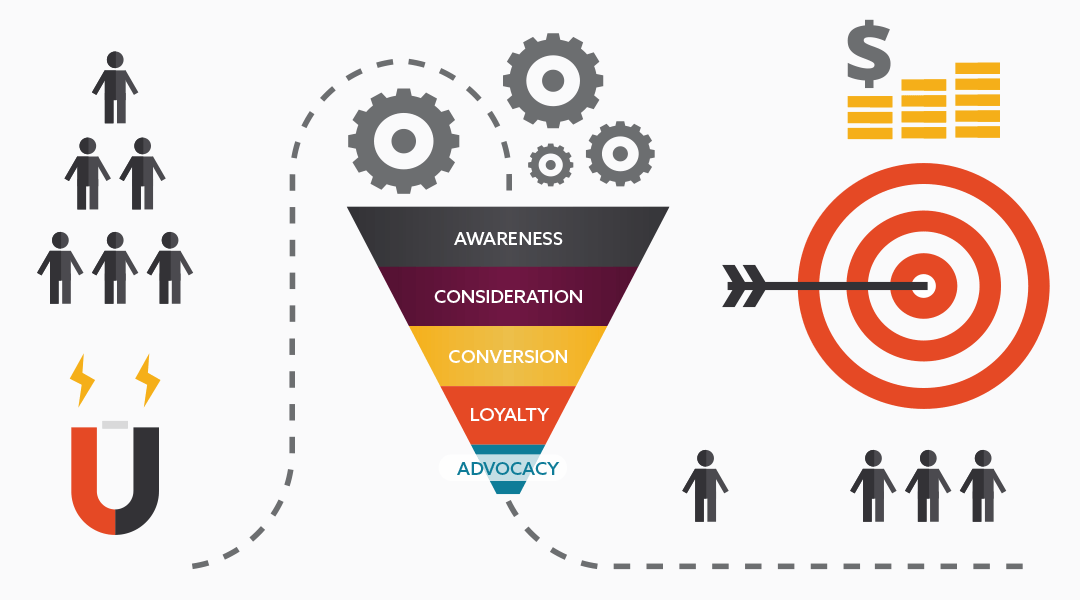“Our Marketing Isn’t Working!” is a phrase (exasperation?) heard way too frequently throughout the halls of corporate America in organizations large and small, for-profit and non-profit, across all industries. Why is this? Are the tools available to marketers becoming less effective? Is there a scarcity of strong marketing talent? Or is there, in many cases, a lack of understanding of what it takes to develop and execute an effective marketing plan.
In this month’s blog we’ve outlined four key areas that based on our experience are key drivers for why your marketing program may not be working. The four key areas, which are fleshed out in much more detail below are:
- You haven’t established “marketing” objectives
- You don’t have a marketing execution calendar
- You don’t have the right executional resources
- You are not measuring the ROI, or effectiveness, of your marketing investment
Which ones apply to you?
(Important caveat: Your marketing efforts of course will not be effective if you don’t have a meaningful and highly differentiated brand communication strategy; so, for the purposes of this blog we’re assuming you have a solid brand strategy in place)
1. You haven’t established “marketing” objectives
We often hear “grow revenue” is our marketing objective, which of course is an important “business goal” for the organization’s collective marketing and sales efforts; but it’s also important to realize that, while marketing objectives need to be aligned with the overall business objectives, specific marketing objectives are generally quite different. At its core, the role of marketing is to change attitudes and behaviors among a specific group of people (aka, your target audience). So, it’s important to first determine what attitudes and/or behaviors you want to change.

To illustrate this, we like to use the traditional marketing funnel (OK, raise your hand if you haven’t seen this before!). The funnel takes your prospective and current customers through the “changing of attitudes and behaviors process”, which leads with brand awareness (a customer can’t buy from you if they’ve never heard of you, then transitions to brand consideration (when a customer is looking for products and services like yours, you must be one of the top 3-5 brand they will consider), then transitions to conversion (the actual sale), then to loyalty (getting the repeat purchase, or a longer-term contract), and finally, to advocacy (getting your customers to tell their friends and colleagues about you).
One could imagine that your specific marketing objective may be very different based on the life-stage of your company and/or brand – e.g., a start-up better start building brand awareness, while an established, well-known brand may focus on conversion and loyalty. And one could also imagine the marketing programs and tactics aligned with achieving each objective would be quite different. For example, awareness building programs such as advertising or trade show presence are very different than loyalty-building programs, where you are communicating directly with your current customer base, and possibly offering an upsell or cross-sell opportunity.
Well-crafted marketing objectives are both specific and measurable. Some examples of good marketing objectives are:
- In a B2C business, increase repurchase rate among current customers from X% to Y% (loyalty)
- In a B2B business, generate 25 new client leads (consideration)
So, we implore you… please, please establish marketing objectives BEFORE you start thinking about what potential strategies and tactics may best help you achieve them.
2. You don’t have a marketing execution calendar
OK, so how many of you develop and execute your marketing programs somewhat (or completely) randomly throughout the year, based on someone’s (generally the CEO’s) “great idea”, a competitor’s activity (if a competitor is doing it, it must be a good idea or we must respond to it) or the latest marketing trend (how do we leverage mobile or Artificial Intelligence)? This doesn’t sound terribly strategic or focused, and we estimate that well over 50% of the small-to-mid-sized companies operate exactly this way!
It’s imperative that, after you’ve established your marketing objectives, you develop a minimum 6-month rolling execution calendar to ensure:
- Your activities are aligned with your objectives
- You have a sufficient level of activity that will help you achieve your objectives
- Your activities are effectively spaced (many companies cram most of their activities in the first few months of the year)
- You have sufficient time to execute the plan with excellence
3. You don’t have the right executional resources
Would you hire a plumber to fix your garage door? Would you hire a painter to lay down new flooring? Then why do so many organizations hire the wrong marketing resource to execute their marketing programs (e.g., hiring a digital marketing firm to do brand strategy and design work? “Marketing” is not some amorphous function/activity that anyone can do… there are many specialized disciplines that require deep expertise and experience. Some of these areas include:
- Brand strategy development
- Brand creative/design
- Marketing plan development
- Digital and mobile marketing strategy and execution
- Social media strategy and execution, which generally includes content marketing
- Broadcast advertising
- Broadcast media
- Public relations/Crisis management
- Marketing research
Unfortunately, we find many firms who specialize in one or (possibly) two areas will say “sure, we can do that” when asked if they can stretch into other areas; and while there may be some base level of competence, you generally are not getting the deep expertise needed to develop and execute a successful marketing effort.
4. You are not measuring the ROI, or effectiveness, of your marketing investment
Far too many CEOs and CFOs complain that they’re spending a ton of money on marketing, with no understanding regarding the ROI and/or effectiveness of that spend. To start, we have an important question for you and your organization. And you, particularly your CEO and CFO, need to be honest!
Does your organization consider marketing a business expense (e.g., such as a copying machine or your monthly lease) or as an investment, which you wouldn’t spend without analyzing the ROI (e.g., such as building a new factory or hiring a new salesperson)?
This is a very important question because what do organizations try to do with their business expenses? They try to reduce them as much as reasonably possible! And what do organizations do with their investments? They conduct deep analysis to understand their projected and ultimately actual ROI; and if it proves to be a smart investment, the firm may choose to increase its investment.
So, how do can you measure the ROI, or effectiveness, of your marketing investment? Well, it needs to start with your objectives; that is, what are you trying to achieve with your marketing spend? For example, if you’re trying to build awareness, some good ways to measure could be at minimum an annual brand awareness tracking study to assess what percent of your prospective customers have heard of your company/brand and recall your message, or you could track the number of downloads or views of a white paper you’ve distributed to try to establish your firm as an industry thought leader. And if you’re trying to cost effectively generate new customer leads, a good way to measure ROI is to evaluate the cost per lead from for a specific marketing/sales program (e.g., a LinkedIn campaign or a trade show) against your organization’s cost per lead target based on the economics of your customers.
Now, there are certainly more reasons why an organization’s marketing may fail, but we’ve found these four to be the most prevalent.
At the end of day, however, marketing is both a strategic and executional function and needs to have a seat at the leadership team table. By understanding the overall organizational objectives, your marketing head can establish smart, measurable marketing objectives, develop an effective and “on strategy” executional calendar, identify the right executional resources, and ultimately work with the finance team to measure the ROI and/or effectiveness of your organization’s marketing efforts. This helps to create alignment across the organization regarding “what’s working” and “what’s not”, and how you’re going to move forward with your marketing efforts. And hopefully eliminate the statement “Our Marketing Isn’t Working”!
Tell us about where your marketing efforts may be falling short, and remember, if you need help in any of the above areas, we’re just a phone call or e-mail away!


Recent Comments